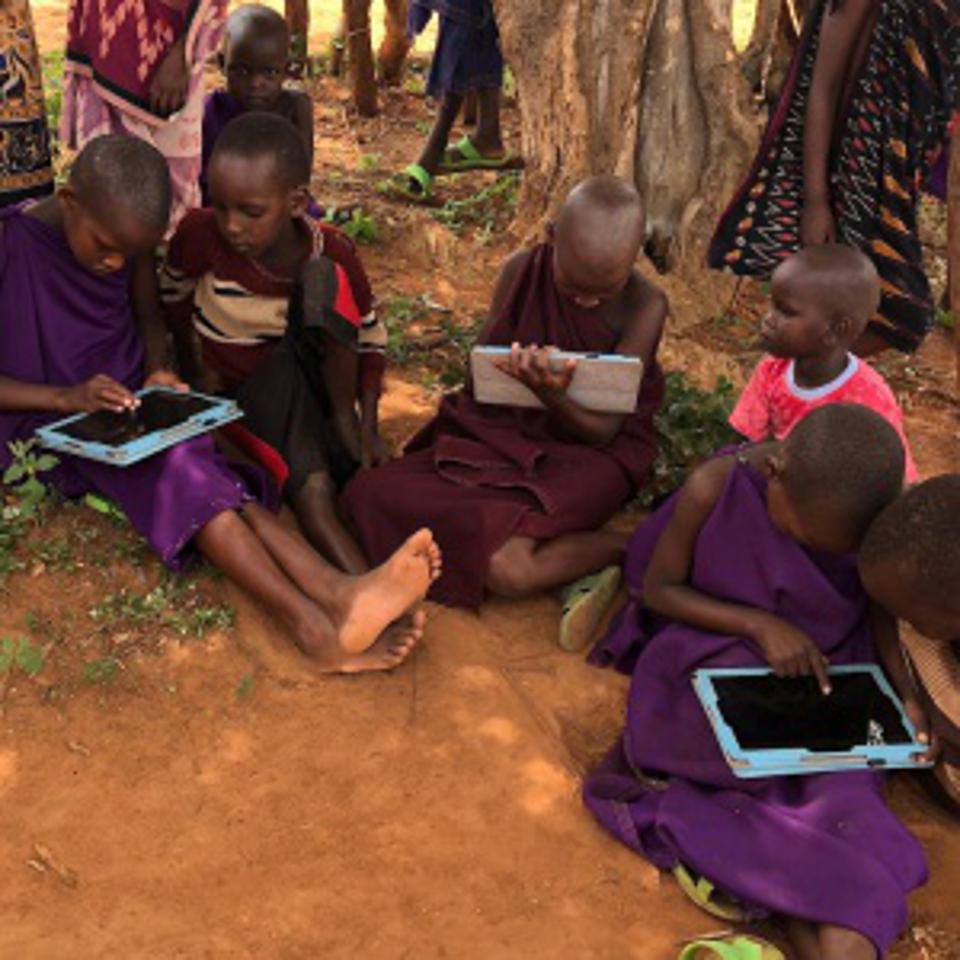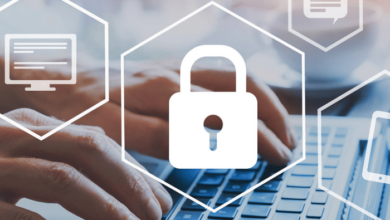
Why Offline Digital Learning Is Key for Children Worldwide
Why offline digital learning is critical to impact children worldwide? In a world where internet access is a privilege, not a right, millions of children are left behind in the digital age. The digital divide, a stark reality for many, prevents them from accessing the transformative power of education.
But what if we could bridge this gap with offline digital learning? This innovative approach offers a lifeline, bringing the benefits of technology to even the most remote corners of the world.
Imagine a world where children in rural villages can access interactive learning materials, engaging games, and captivating stories, all without needing an internet connection. This is the promise of offline digital learning, a revolutionary approach that empowers children with knowledge and skills, regardless of their location or socioeconomic background.
By leveraging technology, we can unlock a world of possibilities for children, equipping them with the tools they need to thrive in the 21st century.
The Digital Divide and its Impact on Children: Why Offline Digital Learning Is Critical To Impact Children Worldwide

The digital divide, the gap between those with access to technology and those without, has profound implications for children worldwide, particularly in their access to education. It is a critical issue that hinders educational equity and perpetuates existing inequalities, limiting opportunities for children in developing countries.
Challenges Faced by Children in Developing Countries
The digital divide presents significant challenges for children in developing countries. Limited access to the internet and technology, coupled with inadequate infrastructure, creates a significant barrier to quality education.
- Lack of Internet Infrastructure:Many developing countries lack the necessary infrastructure, including reliable internet connectivity and broadband access, to support widespread digital learning. This creates a significant barrier for children who rely on internet access for educational resources and online learning platforms.
- Limited Access to Devices:The cost of computers, tablets, and smartphones can be prohibitive for many families in developing countries. This lack of access to devices further restricts their ability to participate in digital learning initiatives.
- Digital Literacy:Even when children have access to devices and the internet, they may lack the necessary digital literacy skills to navigate online learning platforms and effectively utilize digital resources. This digital literacy gap further exacerbates the digital divide.
Examples of How the Digital Divide Exacerbates Existing Inequalities in Education
The digital divide exacerbates existing inequalities in education, particularly for children from marginalized communities and low-income households.
- Rural vs. Urban:Children living in rural areas often face more significant challenges accessing the internet and technology compared to their urban counterparts. This geographical divide perpetuates educational inequalities, limiting opportunities for children in rural communities.
- Gender Inequality:In many developing countries, girls are less likely than boys to have access to technology and the internet. This gender gap in digital access perpetuates existing gender inequalities in education, limiting opportunities for girls to access quality education.
- Socioeconomic Disparities:Children from low-income families are more likely to face challenges accessing the internet and technology. This socioeconomic divide further exacerbates educational inequalities, limiting opportunities for children from disadvantaged backgrounds.
The Benefits of Offline Digital Learning

Offline digital learning resources can be a powerful tool to bridge the digital divide, offering access to quality education for children in underserved communities. By making learning materials available without requiring internet connectivity, these resources can level the playing field and ensure that every child has the opportunity to thrive.
Offline Learning Platforms and Their Functionalities
Offline digital learning platforms are designed to provide educational content and tools that can be accessed without an internet connection. These platforms often leverage various technologies to ensure accessibility and functionality, including:
- Pre-loaded content:Platforms like Khan Academy and Duolingo offer downloadable content, including videos, exercises, and assessments, that can be accessed offline. This allows children to learn at their own pace, even in areas with limited or unreliable internet access.
- Interactive learning tools:Some platforms incorporate interactive elements, such as games, quizzes, and simulations, that can be accessed offline. This makes learning engaging and enjoyable, even without an internet connection.
- Offline dictionaries and encyclopedias:Educational resources like Wikipedia and Merriam-Webster provide offline versions of their content, allowing children to access information and definitions without internet access. This can be particularly helpful for research and language development.
Accessibility, Affordability, and Sustainability
Offline digital learning offers numerous advantages in terms of accessibility, affordability, and sustainability. These advantages make it an attractive option for bridging the digital divide and promoting educational equity.
- Accessibility:Offline digital learning resources can be accessed by children in remote areas, where internet connectivity is limited or nonexistent. This ensures that all children, regardless of their location, have access to quality education.
- Affordability:Offline learning platforms are often free or available at a low cost, making them accessible to children from low-income families. This can help reduce the financial burden associated with accessing education.
- Sustainability:Offline learning resources are sustainable in the sense that they do not require ongoing internet access to function. This makes them a reliable and long-term solution for educational access, particularly in areas with limited or unreliable internet infrastructure.
Offline Learning Approaches and Strategies
Offline digital learning offers a range of engaging approaches that can cater to diverse learning styles and needs. These approaches aim to provide children with interactive and stimulating learning experiences without relying solely on internet connectivity.
Imagine a world where every child has access to quality education, regardless of their location or resources. That’s the promise of offline digital learning. It’s a powerful tool for bridging the educational gap, but the reality is that global challenges like inflation, highlighted by President Biden’s recent visit to the Port of Los Angeles biden to visit port of los angeles casting inflation as a global problem , can impact the affordability and accessibility of these vital resources.
By ensuring that offline digital learning is readily available, we can empower children worldwide to unlock their full potential and contribute to a brighter future.
Interactive Games
Interactive games are a powerful tool for offline digital learning. They can be used to teach a variety of subjects, from math and science to language arts and social studies. These games can be designed to be engaging and fun, while also promoting critical thinking, problem-solving, and collaboration skills.
- Board gamescan be used to teach math concepts, such as addition, subtraction, multiplication, and division. For example, a game like “Chutes and Ladders” can be modified to incorporate math problems.
- Card gamescan be used to teach vocabulary, grammar, and spelling. For example, a game like “Go Fish” can be modified to require players to identify matching words or spelling patterns.
Offline digital learning can be a game-changer for kids worldwide, especially in areas with limited access to traditional education. Just like how a wine producer who put ultra premium rose on the map is now taking another leap for terroir expression pushes boundaries, offline digital learning can unlock new possibilities for children, allowing them to learn at their own pace and access a wealth of knowledge regardless of location.
It’s a powerful tool that can help bridge the educational gap and empower children to reach their full potential.
- Role-playing gamescan be used to teach history, geography, and social studies. For example, a game like “Dungeons & Dragons” can be adapted to explore different historical periods or cultures.
Storytelling
Storytelling is a natural and effective way for children to learn. It can be used to introduce new concepts, develop vocabulary, and enhance creativity. Offline digital learning can leverage storytelling through interactive books, audio recordings, and even simple drawing activities.
Offline digital learning is crucial for empowering children in underserved communities, offering access to quality education regardless of location. It’s heartbreaking to read stories like the one about the Columbia graduate student brutally beaten in Manhattan, where her mother struggles for answers , highlighting the need for safety and support for all learners.
By bridging the digital divide, offline digital learning can equip children with the knowledge and skills they need to thrive in a world facing complex challenges.
- Interactive bookscan include sound effects, animations, and games that bring stories to life. For example, a book about animals could include sound effects of different animal noises or a game where children can match animals to their habitats.
- Audio recordingscan be used to tell stories, teach language skills, or introduce new concepts.
For example, an audio recording of a story could be accompanied by illustrations or a simple activity sheet.
- Drawing activitiescan encourage children to visualize stories and express their creativity. For example, children could draw pictures of characters or scenes from a story they have heard or read.
Activity-Based Learning
Activity-based learning is a hands-on approach that encourages children to learn by doing. This approach can be used to teach a variety of subjects, from science and math to art and music. Offline digital learning can enhance activity-based learning by providing digital tools and resources.
- Digital toolssuch as tablets or laptops can be used to access educational apps, games, and simulations. For example, an app could allow children to build a virtual volcano or explore the human body.
- Offline resourcessuch as printable worksheets, activity cards, and craft supplies can be used to supplement digital learning.
For example, children could use a printable worksheet to record their observations from a science experiment or use craft supplies to build a model of a solar system.
- Outdoor activitiescan also be integrated with offline digital learning. For example, children could use a GPS device to navigate a nature trail or use a digital camera to document their observations.
Integration with Traditional Classroom Teaching
Offline digital learning can be seamlessly integrated with traditional classroom teaching methods. It can provide supplemental learning materials, enhance engagement, and offer personalized learning experiences.
- Supplemental learning materialssuch as interactive games, quizzes, and simulations can be used to reinforce classroom learning. For example, a teacher could assign an interactive game on a topic covered in class or provide students with a quiz to assess their understanding.
- Engagementcan be enhanced through the use of digital tools such as interactive whiteboards, tablets, and laptops. For example, a teacher could use an interactive whiteboard to display a video or animation, or students could use tablets to participate in a collaborative activity.
- Personalized learningcan be achieved by providing students with access to digital resources that are tailored to their individual needs and learning styles. For example, a teacher could provide students with different types of digital resources, such as audio recordings, videos, or text-based materials, based on their learning preferences.
The Role of Technology in Offline Learning

Technology can be a powerful tool for creating engaging and interactive offline learning experiences, even in environments with limited access to the internet. Offline learning strategies can leverage technology to enhance educational outcomes and promote digital literacy.
Examples of Low-Cost and Accessible Technologies
Low-cost and accessible technologies can be used to create engaging and interactive offline learning experiences.
- Mobile Devices:Smartphones and tablets are becoming increasingly affordable and accessible. They can be used to access educational apps, games, and videos that can be downloaded and used offline.
- Digital Pen and Paper:Using a digital pen and paper can help to create interactive learning experiences. For example, students can use a digital pen to annotate textbooks or create interactive diagrams on paper.
- Offline Learning Platforms:There are several offline learning platforms available that provide access to educational content without an internet connection. For example, Khan Academy’s offline app allows students to download videos and exercises for offline learning.
- Educational Games and Simulations:There are many educational games and simulations available that can be played offline. These games can help to make learning more engaging and interactive.
- Open Educational Resources (OER):OER are educational materials that are freely available online. Many OER can be downloaded and used offline, providing access to a wealth of educational resources.
Offline Learning Promotes Digital Literacy and Critical Thinking Skills
Offline learning experiences can help to promote digital literacy and critical thinking skills.
- Digital Literacy:Offline learning can help students develop essential digital literacy skills, such as navigating digital interfaces, understanding different file formats, and using technology to access information.
- Critical Thinking Skills:Offline learning can also help students develop critical thinking skills, such as analyzing information, evaluating sources, and drawing conclusions.
The Importance of Community Engagement
Offline digital learning initiatives can only be truly successful with the active participation and support of the communities they serve. Building strong partnerships with parents, teachers, and community members is essential for creating effective learning environments that cater to the unique needs of children.
Community Contributions to Offline Learning
Engaging communities in offline digital learning is crucial for several reasons. Parents, teachers, and community members can play a vital role in creating a supportive learning environment by:
- Providing Resources:Communities can contribute resources such as computers, internet access, learning materials, and physical spaces for learning activities.
- Facilitating Learning:Parents and community members can act as mentors, tutors, and facilitators, guiding children through learning activities and providing support.
- Creating Awareness:Communities can raise awareness about the importance of digital literacy and offline learning initiatives, encouraging participation and engagement.
- Advocating for Change:Communities can advocate for policies and initiatives that support offline learning and address the digital divide.
Examples of Successful Community-Based Programs
Numerous successful community-based offline learning programs demonstrate the power of community engagement.
- The Khan Academy’s “Khan Academy Kids” programprovides free, engaging learning resources for young children, accessible even without internet access. The program relies heavily on community involvement, with volunteers translating materials and providing support to families.
- The “Digital Divide” project in Indiautilizes community libraries and resource centers to provide access to digital learning resources and technology training for underserved communities. This initiative has been successful in bridging the digital divide and empowering children with essential skills.
The Future of Offline Digital Learning
Offline digital learning holds immense potential to transform education systems worldwide. It has the power to bridge the digital divide, provide equitable access to quality education, and empower learners in even the most remote and underserved communities.
Emerging Trends and Innovations in Offline Learning
Offline digital learning is rapidly evolving, driven by technological advancements and innovative approaches.
- Personalized Learning:Offline learning platforms are increasingly incorporating adaptive learning technologies that personalize content and pace to cater to individual needs and learning styles. This allows learners to progress at their own pace and focus on areas where they need more support.
- Interactive Learning:Gamification, simulations, and interactive exercises are becoming more prevalent in offline learning platforms. These engaging approaches enhance learner motivation, improve knowledge retention, and create a more immersive learning experience.
- Offline Content Delivery:The use of offline content delivery mechanisms, such as USB drives, SD cards, and offline apps, is expanding. This enables learners to access educational resources even in areas with limited or no internet connectivity.
- Community-Based Learning:Offline learning initiatives are increasingly incorporating community-based approaches. This involves leveraging local resources, engaging community members as facilitators, and creating collaborative learning environments.
The Role of Offline Learning in Achieving the Sustainable Development Goals (SDGs), Why offline digital learning is critical to impact children worldwide
Offline digital learning is a powerful tool for achieving the Sustainable Development Goals (SDGs), particularly those related to education, poverty eradication, and gender equality.
- SDG 4: Quality Education:Offline learning can contribute to achieving quality education for all by providing access to learning resources, improving teacher training, and fostering inclusive learning environments. For example, the Khan Academy’s offline platform provides access to high-quality educational content for learners without internet access.
- SDG 1: No Poverty:By empowering individuals with knowledge and skills, offline learning can contribute to reducing poverty and promoting economic development. For instance, offline vocational training programs can equip individuals with the skills needed to secure employment and improve their livelihoods.
- SDG 5: Gender Equality:Offline learning can help bridge the gender gap in education by providing equal opportunities for girls and women in areas where they may face barriers to accessing traditional schooling. For example, the BRAC’s “Learning for Life” program in Bangladesh uses offline learning to provide girls with access to education in rural areas.
Outcome Summary
Offline digital learning is not just about technology; it’s about unlocking potential, fostering creativity, and bridging the digital divide. By embracing this innovative approach, we can empower children worldwide with the knowledge and skills they need to succeed. Let’s work together to create a future where every child has access to quality education, regardless of their circumstances.






